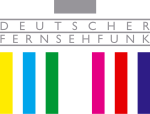Fernsehen der DDR
 |
|
| Type | Broadcast television |
|---|---|
| Country | East Germany |
| Availability | Free-to-air Analogue terrestrial |
|
Broadcast area
|
East Germany and parts of West Germany Czechoslovakia Poland Denmark Liechtenstein Switzerland |
| Owner | Government of East Germany |
|
Launch date
|
21 December 1952 |
| Dissolved | 31 December 1991 |
|
Former names
|
Fernsehen der DDR (February 1972 – February 1990) |
| Replaced by |
DFF 1: expansion of Das Erste on 15 December 1990 DFF 2: replaced by DFF Länderkette on 15 December 1990 DFF Länderkette: replaced by MDR Fernsehen in Saxony, Saxony-Anhalt, Thuringia, Fernsehen Brandenburg in Brandenburg and expansion of N3 in Mecklenburg-Vorpommern on 1 January 1992 |
Deutscher Fernsehfunk (DFF), known from 1972 to 1990 as Fernsehen der DDR (DDR-FS), was the state television broadcaster in East Germany (GDR).
Radio was the dominant medium in the former Eastern bloc, with television being considered low on the priority list when compiling Five-Year Plans during the industrialisation of the 1950s. In Germany, the situation was different as East and West Germany were in competition over available frequencies for broadcasts and for viewers across the Iron Curtain. The West German Nordwestdeutscher Rundfunk (NWDR) had made early plans to begin television broadcasts in its area, which originally included West Berlin. The first western test broadcasts were made in 1950.
The GDR authorities therefore also made an early start with television and began construction of a television centre in Adlershof on 11 June 1950. The GDR television service began experimental test broadcasts on 20 December 1951. The NWDR announced plans to begin a regular television service from Hamburg starting with Christmas 1952. This spurred the East German authorities into further action.
A relay transmitter in the centre of East Berlin was built in February 1952 and connected to Adlershof on 3 June. On 16 November, the first television sets were made available to the public at 3500 East German marks each.
Regular public programming, although still described as testing, began on 21 December 1952 – Joseph Stalin's birthday – with two hours a day of programmes. Continuity announcer Margit Schaumäker welcomed viewers at 20:00 and introduced the station's logo – the Brandenburg Gate. Speeches by senior figures in the television organisation followed, then the first edition of the East German national news programme, Aktuelle Kamera, presented by Herbert Köfer.
The policy of the ruling Socialist Unity Party of Germany (SED) was to censor the "mass media". As television had a limited audience, it was not classed as a mass medium and therefore Aktuelle Kamera was, at first, uncensored and even critical. This situation changed after the television service reported accurately on the uprising in East Germany on 17 June 1953, prompting the director's removal. From then on, television newscasts took on a similar character to their radio counterparts, and were sourced from official outlets.
...
Wikipedia
